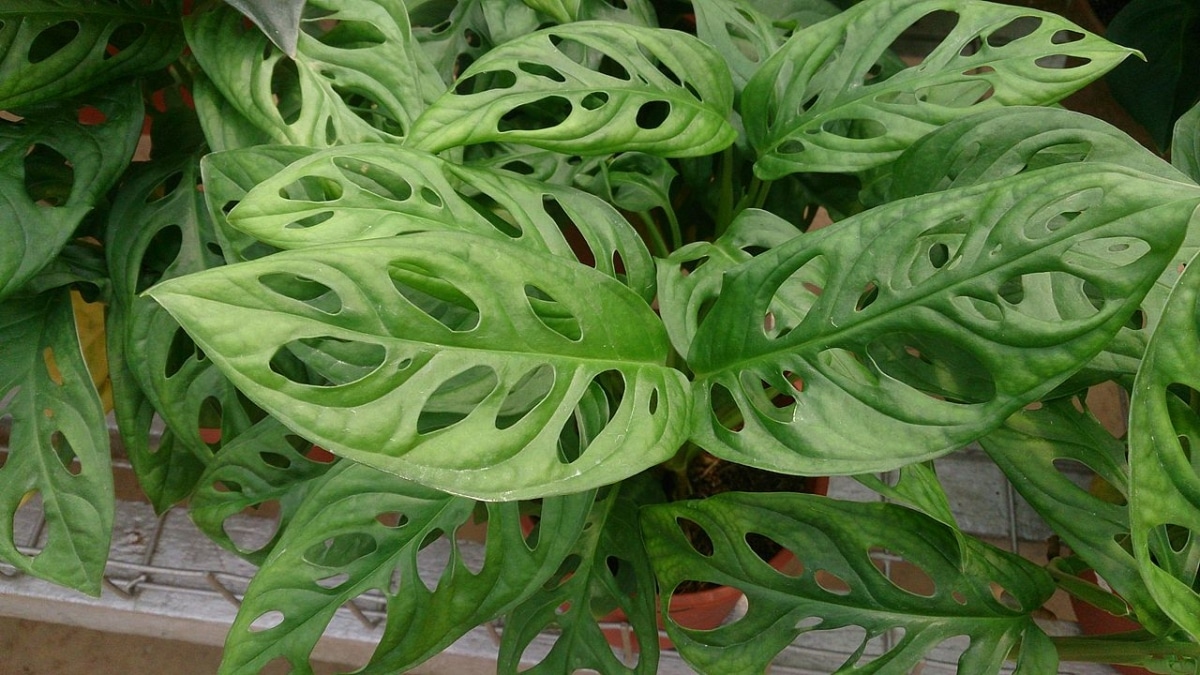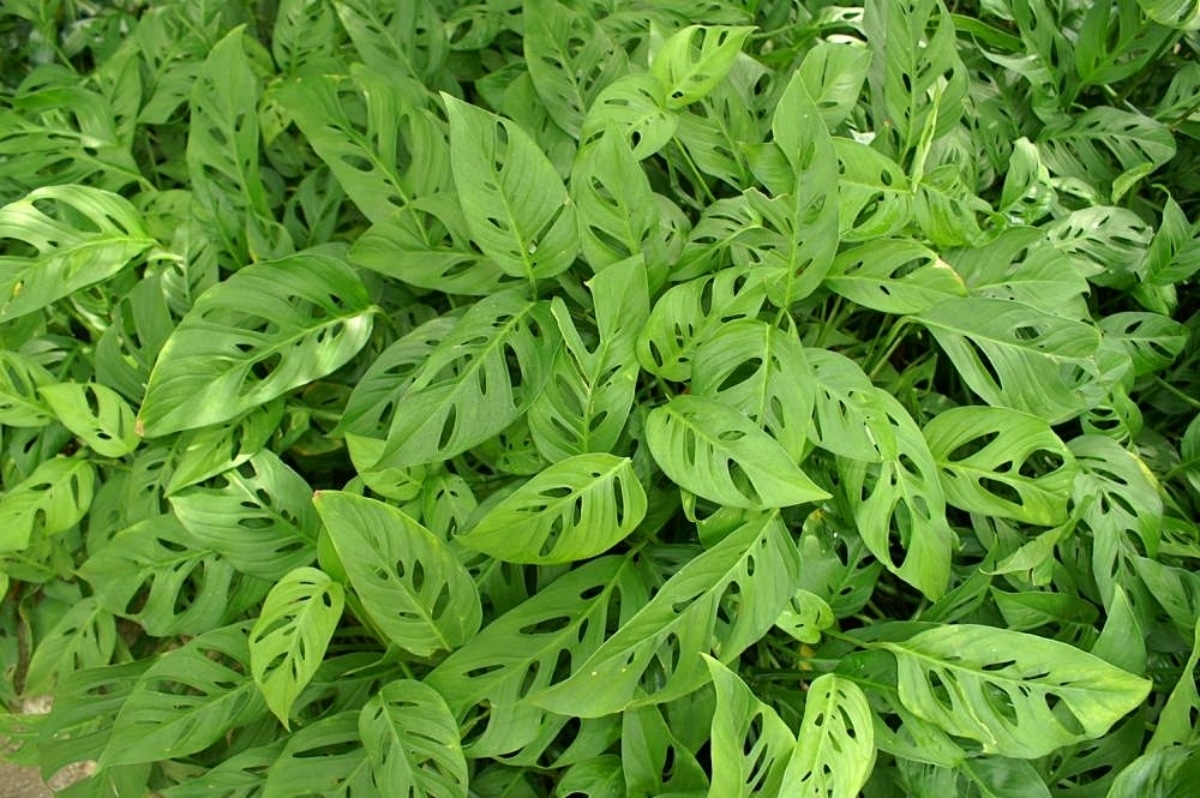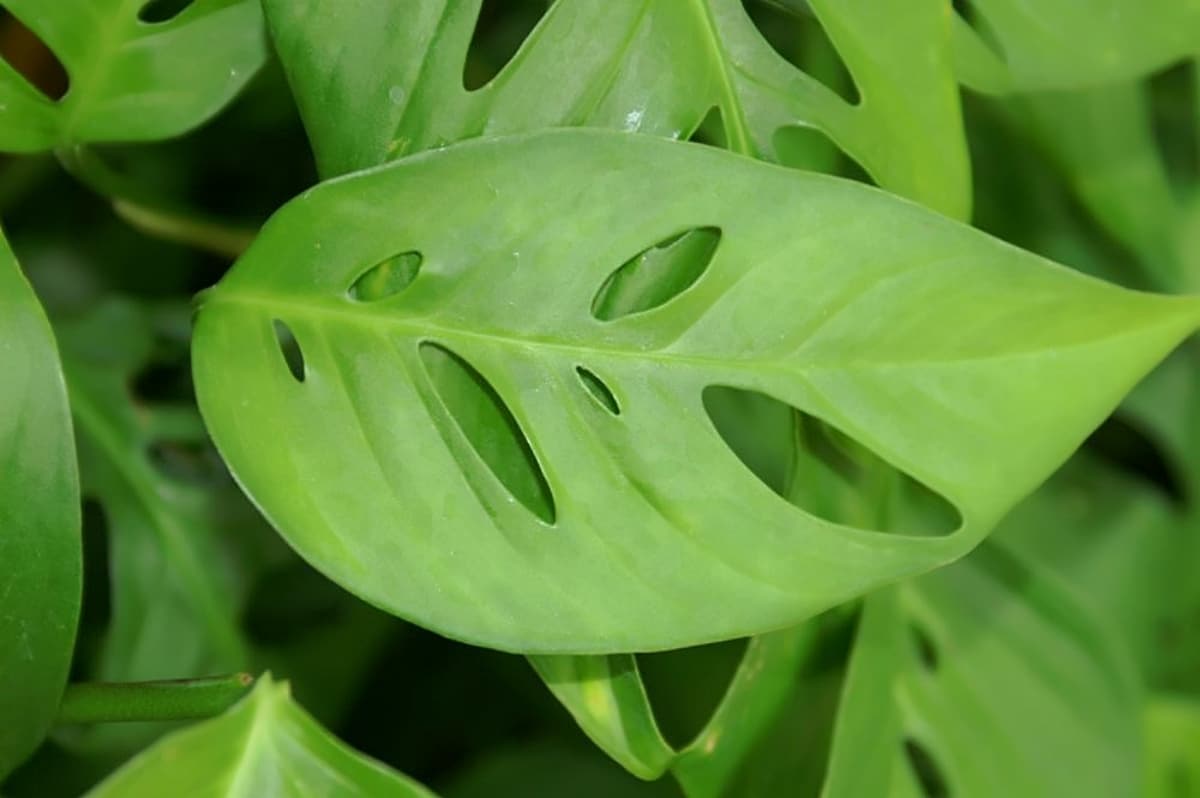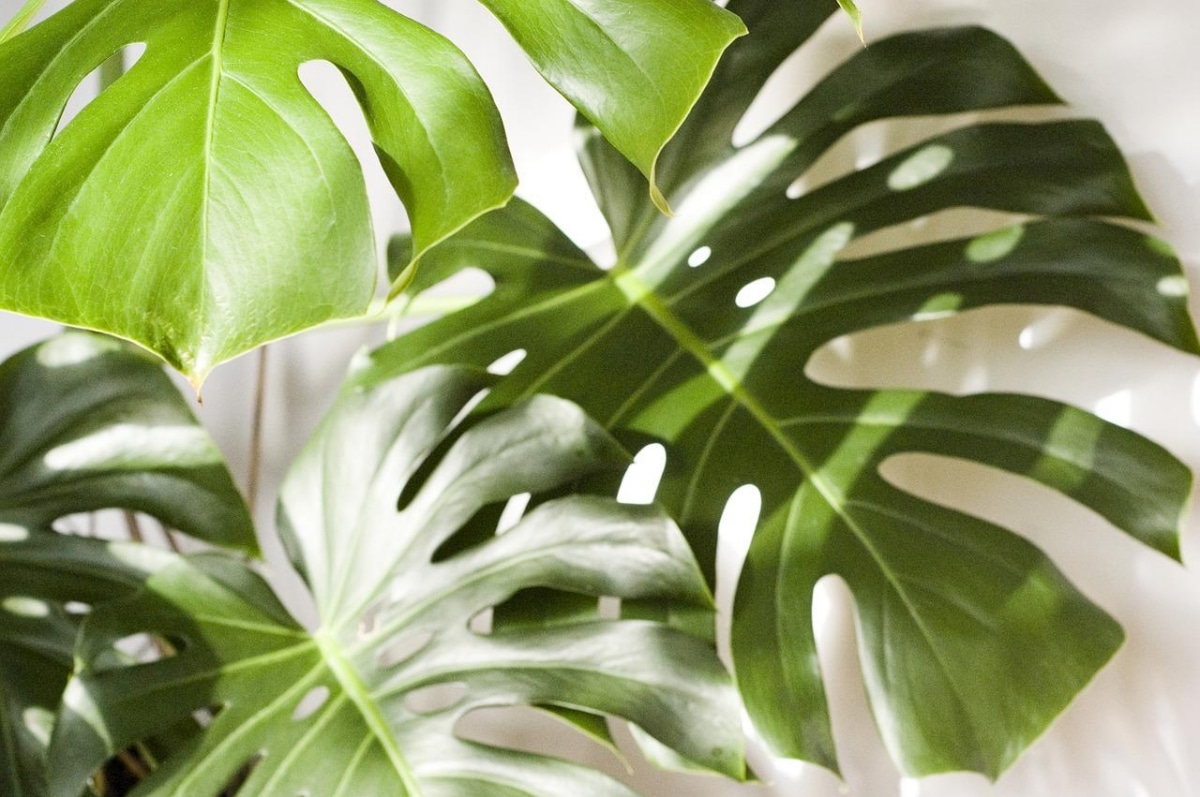
Image - Wikimedia / Mokkie
La Monstera obliqued it is a tropical plant that can, and in fact, should, be kept at home when autumn and/or winter are very cold, since it does not support it. But this should not worry you, because like other species of the genus, it adapts extremely well to living indoors.
Despite its appearance, it is very easy to care for. What's more, if you have already had or have some other monstera, you will see that the care that this species needs is practically identical. But before, let us know what its characteristics are.
How is the Monstera obliqued?

Image – Flickr/David J. Stang
La Monstera obliqued It is an epiphytic plant native to Mexico, which it can reach an average height of 2 meters, although it can reach 4 meters. It bears a strong resemblance to the Monstera adansonii, but it differs from it by having thinner sheets (they look like paper), larger and with larger holes, to the point that they are almost completely pierced.
These leaves, as well as the stem, are green.. This is because they contain chlorophyll, and therefore carry out photosynthesis. On the other hand, it is a species that rarely flowers when cultivated, but if it does, we will see that it is about 4 centimeters tall and that it is cream in color.
How do I know if my monstera is okay?
Before we start talking about care, it is important that we know how to identify a Monstera obliqued healthy from another who is not. A) Yes, a good one will look green, with stems growing strongly; instead, one who is sick will show any one of these symptoms, or several:
- Yellow leaves, either due to lack of irrigation (in which case it would be the newest leaves), or due to excess.
- Yellow spots on some leaves: they are burns. Never put it in front of a window or in direct sunlight.
- Pests: mealybugs, aphids, thrips, etc., on leaves and/or stems.
- sad appearance; that is, with the leaves "fallen" or folded.
What are the care of the Monstera obliqued?
If you are one of those who dares to have one at home or abroad, and you want it to last, then we advise you to put our advice into practice:
Where should it be placed?

Image - Wikimedia / David J. Stang
To answer this question it is important to know the climate in the area. And it is that if for example it is tropical, and there are never frosts, you can have it outside. But if, on the contrary, the temperatures drop below 15ºC, then you will have to keep it at home at least during the autumn and winter. Of course, another option is to grow it indoors throughout the year.
Regardless of this, It must be placed in an area where there is a lot of light, but not sun or direct light. In addition, if you have it inside the house, it will be placed in a room where there are no fans, radiators, or any air conditioning device, since otherwise the air currents would harm it, damaging the leaves and causing let them dry.
What size pot do you need?
It depends a lot on the size of the pot you have before transplanting. Assuming it's about 10 inches in diameter, the new pot will need to be about 7 inches wider and taller. In this way, we will get the Monstera obliqued It can grow more for about two, three or four years, depending on the weather conditions and the care we give it.
In addition, it is convenient to choose pots with holes in their base. Never plant it in one that does not have it, otherwise we will lose it before we know it due to excess moisture in its roots.
When is it transplanted?
Every two or three years you will have to take the pot and see if the roots have begun to peek through the holes in it. If so, you will have to transplant it to a larger pot with substrate for green plants such as this or a universal one like this. The ideal time to do this is spring..
How to straighten my monstera?

you can have your Monstera obliqued as a hanging plant, or as a climber. If you opt for the second option, You can put a wooden or thin plastic stake on it, and tie it to it with cable ties, for example. As the stems are much finer than those of the Monstera delicious, and the plant in general weighs considerably less, it is not necessary to put a robust stake on it.
Now, you have to be careful how you put it: it is better to stick it closer to the edge of the pot than next to the main stem, as there is less risk of some roots breaking.
How to avoid having pests?
Although it is resistant, if the environment is very hot it can have some, such as mealybugs. To avoid it, I recommend treating it regularly with diatomaceous earth, or clean it from time to time with beer. In this way, surely you will not have any. In the video we explain how to do it:
How should it be watered?
And we end up talking about irrigation. Although it is the last point, it is one of the most important, because if it is not watered, or if it is watered too much, the plant will not survive. So that this does not happen, what you have to do is check the humidity of the soil by inserting a wooden stick for example; or checking how much the pot weighs after watering and again after a few days. Since dry soil weighs less than wet soil, this difference in weight can help you know when to water.
La Monstera obliqued it is a very pretty plant. We hope these tips will help you.